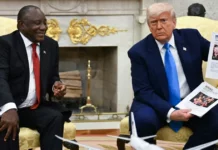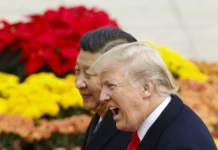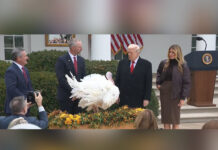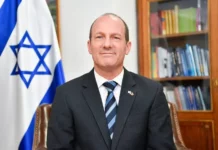LONDON: The 200th birth anniversary of Queen Victoria, the Empress of India during the British Raj era, will be marked with a special exhibition that explores her complex love affair with the country that was her colony.
‘Victoria: Woman and Crown’ opens at Kensington Palace in London next Friday, 200 years since her birth on May 24, 1819 at the same palace as Princess Victoria.
“Her complex love affair with India will form one of the central themes, from the forced Anglicisation of a deposed Maharaja (Duleep Singh) in the 1850s to her personal appointment of an Indian Secretary (Abdul Karim) in 1888,” Historic Royal Palaces said in a statement, announcing the bicentenary exhibition.
As the former ruler of the Sikh Empire, deposed during the Anglo-Sikh wars with the annexation of Punjab under Maharaja Ranjit Singh, his son Maharaja Duleep Singh was exiled to Britain, where he was first introduced to Queen Victoria at Buckingham Palace.
After this meeting, the Queen described the young Maharajah in her journal as “16 & extremely handsome…(he) has a pretty, graceful & dignified manner. He was beautifully dressed & covered with diamonds”.
The meeting is believed to have kicked off a lifelong interest in Singh and his family, with Victoria acting as godmother to his daughter Sophia, and offering his children “grace and favour” accommodation at Hampton Court Palace following his death.
“Examples of the Maharajah’s opulent wardrobe go on display at Kensington Palace for the first time, alongside a portrait of Duleep Singh commissioned by Victoria from one of her favourite artists,” noted Historic Royal Palaces.
The other Indian connect explored as part of the exhibition is the role played by Victoria’s Indian servant Abdul Karim, on whom the Queen bestowed the title of “Munshi” or teacher.
Their close friendship has been captured in ‘Victoria and Abdul: The Extraordinary True Story of the Queen’s Closest Confidant’ by London-based author Shrabani Basu and was recently also adapted for the screen with Dame Judi Dench taking on the role of Queen Victoria.
Under the Munshi’s tutelage, the monarch learned to read and write Urdu and one of her diaries carefully inscribed in the language form one of the star items of the display, set alongside items showcasing Victoria’s relationship with her Empire.
Polly Putnam, exhibition curator at Historic Royal Palaces, said: “Although considered one of the most famous women in history, Queen Victoria’s personality, passions and politics remain little known.
“To mark the 200th anniversary of her birth at Kensington Palace, this year we’ll be re-examining the life of this fascinating and contradictory monarch, whose cultural legacy and impact on world affairs are still felt to this day.”
The new display, alongside a tour of the rooms the Queen inhabited as a young girl at Kensington Palace, is aimed at exploring the private woman behind the public monarch, and re-examine Victoria’s later life and legacy.
As the birthplace of the Victorian era, Kensington Palace played a central role in the shaping of the monarch. It was at Kensington that Victoria spent her formative years under the gaze of her ever-present mother the Duchess of Kent, and it was in her apartment at the palace that she went to bed a princess and woke up a queen.
As the head of an ever-growing family, Victoria had the unique challenge of balancing the role of wife and mother with that of Queen of an expanding empire.
The exhibition will also assess her power and influence, and how she carefully curated her own public image.
As the most famous woman in the world at the dawn of the photographic age, Victoria understood and consciously harnessed this new technology, using it both to project an image of Imperial power across continents and document the minutia of family life.
Similarly, the display will consider how her organisation of the marriages of her nine children and those of her 42 grandchildren into the ruling families of Europe marked a deliberate exercise in shaping dynastic politics across the European continent, and earned her the nickname “the Grandmother of Europe”.
Victoria’s long reign also saw the birth of four future kings. A poignant portrait of her with her son, grandson and great-grandson (the future Edward VII, George V and Edward VIII respectively) will go on display, reunited with the delicately embroidered black bodice Victoria wore when sitting for the artist.
With the death of her husband Albert in 1861, Victoria adopted a wardrobe of black gowns as a potent and public symbol of her grief. Responding to this central theme of loss, a specially commissioned installation created by artist Jane Wildgoose titled ‘In Sorrow Shut’ will consider the enduring symbolism of Victoria’s widowhood.
Rare survivals from Victoria’s private wardrobe will go on display at Kensington Palace for the first time including a simple cotton petticoat dated to around the time of her marriage, and a fashionable pair of silver boots recently acquired by Historic Royal Palaces with support from Art Fund providing a stark contrast to the exquisitely made, black satin gowns she was so famous for wearing. PTI








